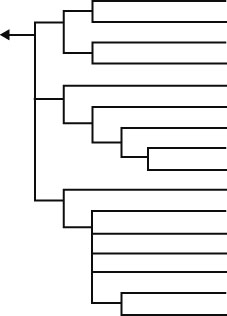|
The heterokontophytes possess plastids via secondary endosymbiosis with a red alga. They are basically unicellular, but multicellular or coenocytic species are also known. The brown algae (Phaeophyceae) form especially large multicellular thalli composed of differentiated tissues. Most heterokontophytes are photosynthetic, but heterotrophic species lost secondarily photosynthetic ability are known. Many heterokontophytes inhabit in aquatic environments (freshwater tp marine), but some terrestrial species are also present. Brown algae sometimes fom marine forests and play an important role in coastal ecosystem. Diatoms, which are probably most abundant phytoplanktons in both freshwater and marine, are calculated to account for 20% in earth production. Some brown algae are used as foods (Undaria, Laminaria, Sphaerotrichia etc.). Some species of the Bacillariophyceae, Raphidophyceae and Pelagophyceae form blooms to damage economically.
The cells are naked or covered by scales, lorica or cell wall. The plastid is enclosed by four membranes, outer two of which are usually continue to nuclear envelope (plastid ER). Thylakoids are stacked in groups of three (lamellae), and a girdle lamella usualy surrounds other thylakoids. Most heterokontophytes include chlorophyll c and fucoxanthin as major carotenoid. Flagellate cells frequently possess stigma in chloroplast. In these cells posterior flagellum possesses the flagellar swelling in which photoreceptor is present. The transitional region of flagella usually includes transitional helix. Asexual reproduction by means of binaru fission, sporogenesis, zoosporogenesis etc.
Sexual reproductions by isogamy to oogamy are known.
|
|
